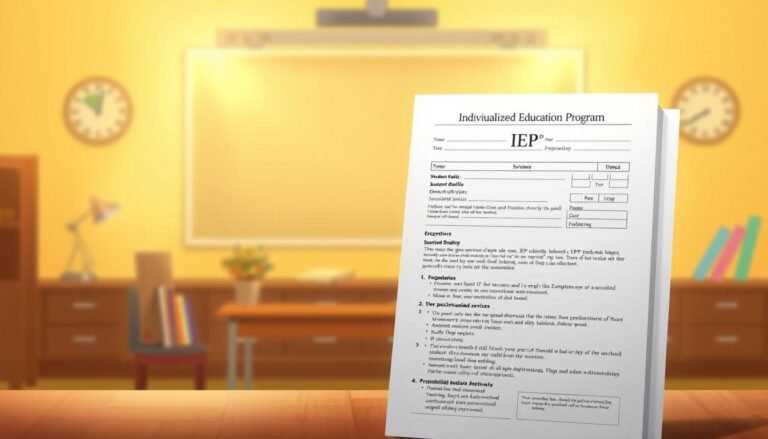
Balancing the Budget: The Ultimate Guide to Finding Financial Support for Your Learning-Disabled Child
Introduction
Raising a child with learning disabilities can be both a rewarding and daunting experience. Parents often grapple with balancing emotional, educational, and financial needs. How do you provide the best support while keeping your household budget intact? If you’re facing this challenge, you’re not alone. This comprehensive guide, “Balancing the Budget: How to Find Financial Support for Your Learning-Disabled Child,” aims to equip you with essential strategies, resources, and insights to help you secure necessary financial support while effectively managing your expenses.
In this article, we will explore unique methods to find financial aid, share case studies that resonate with real families, and provide actionable solutions to budgeting challenges. With the right knowledge and resources, you can strike a balance, ensuring your child gets the help they need without sacrificing your family’s financial health.
Understanding Learning Disabilities
Before delving into financial strategies, it’s crucial to understand the landscape of learning disabilities. This comprehension will pave the way for knowing where and how to seek financial support effectively.
Types of Learning Disabilities
Learning disabilities encompass a range of challenges, from dyslexia and ADHD to more complex issues like processing disorders. Each disability comes with unique educational needs, often requiring specialized resources or interventions that can strain a family’s budget.
The Financial Impact
Caring for a child with learning disabilities often comes with substantial costs: specialized tutoring, therapy sessions, educational materials, and sometimes, private schooling. But understanding the available resources can significantly ease financial strains.
Finding Financial Support
1. State and Federal Programs
Navigating government programs is a vital step in “Balancing the Budget: How to Find Financial Support for Your Learning-Disabled Child.”
a. IDEA (Individuals with Disabilities Education Act)
The IDEA ensures that children with disabilities receive free appropriate public education (FAPE). This federal act mandates that schools provide special education services tailored to each child’s needs. Parents should advocate for their child’s rights, which may include an Individualized Education Program (IEP).
b. Supplemental Security Income (SSI)
SSI provides financial assistance to low-income individuals with disabilities, including children. Families may qualify for support that can be used towards additional educational resources or therapeutic interventions.
2. Nonprofit Organizations and Scholarships
Various nonprofit organizations provide grants and scholarships specifically for families of children with learning disabilities.
a. The K-12 Special Education Grant
This grant assists families needing financial help for private schooling or tutoring services. It’s essential to research eligibility and apply promptly.
b. Learning Disabilities Association of America (LDA)
The LDA offers scholarships and resources that can significantly alleviate educational expenses.
3. Insurance and Health Coverage
Understanding how your insurance covers educational needs is crucial for balancing the budget.
a. Medicaid and CHIP (Children’s Health Insurance Program)
These programs may cover therapy and assessments, helping families save on necessary costs while ensuring their child receives adequate care.
b. Flexible Spending Accounts (FSAs)
Utilizing FSAs allows parents to set aside pre-tax dollars, which can be used for a variety of educational and therapeutic expenses.
4. Crowdfunding and Community Support
In the digital age, crowdfunding has emerged as a viable option for many families.
a. Platforms Like GoFundMe
Many parents have successfully raised funds to support educational needs through social media sharing. Crafting a compelling story can resonate with potential donors, providing financial relief.
b. Local Community Initiatives
Engaging with community organizations and local churches can yield support. Many local groups offer funding or resources that can help offset educational costs.
Case Studies: Real-World Applications
Case Study 1: The Smith Family
The Smith family faced challenges when their son, Jake, was diagnosed with ADHD and dyslexia. They turned to federal programs like IDEA and discovered that their school could provide necessary accommodations. Additionally, they applied for a special education grant, which covered tutoring costs. The Smiths managed to balance their budget while ensuring Jake received essential support.
Analysis
The Smith family’s experience illustrates the importance of advocacy and leveraging available government programs. It demonstrates that parents can effectively negotiate school resources.
Case Study 2: The Martinez Family
The Martinez family faced rising costs after their daughter, Mia, was diagnosed with a learning disability. They found financial support through community resources, such as local nonprofits that offered scholarships aimed at families like theirs. By applying to multiple avenues, including crowdfunding, they managed to finance Mia’s extra tutoring sessions.
Analysis
The Martinez family’s approach underscores the necessity of exploring all options, including local NGOs and community fundraising. Their proactive stance allowed them to ease the financial burden significantly.
Creating a Budget That Works
1. Assessing Your Financial Situation
Start by creating a comprehensive budget that outlines your current expenses, income, and financial obligations. Use simple budgeting tools or apps to help track where your money goes each month.
2. Prioritizing Needs
When “Balancing the Budget: How to Find Financial Support for Your Learning-Disabled Child,” it’s crucial to prioritize needs over wants. Determine which areas require immediate attention—such as therapy or tutoring—and plan your finances accordingly.
3. Seeking Alternative Resources
Look for low-cost or free resources, including community programs, online tutorials, and library resources. Many organizations provide free workshops for parents and children that can massively impact learning without straining your finances.
Tables: Financial Breakdown Example
| Expense Type | Monthly Cost ($) | Funding Source |
|---|---|---|
| Specialized Tutoring | 400 | Special Education Grant |
| Therapy Services | 250 | Insurance, Medicaid |
| Educational Materials | 100 | Community Nonprofit |
| School Supplies | 50 | Local Fundraising |
| Total | 800 |
This simple table showcases potential monthly costs for families seeking support as they balance the budget for their learning-disabled child. By identifying funding sources, parents can streamline expenses effectively.
Conclusion
Balancing the budget while ensuring your learning-disabled child receives the support they need is undoubtedly a challenging task. By leveraging state and federal programs, nonprofit organizations, insurance options, portable crowdfunding campaigns, and community resources, families can gain financial relief and support.
Remember, advocacy is key. Don’t hesitate to explore every available option and negotiate with schools and service providers. With persistence and creativity, you can find a pathway that keeps your child thriving without breaking the bank.
Motivational Takeaway
Every child deserves an equal opportunity to succeed, and as a parent, your advocacy and resourcefulness can provide that. Balancing the budget doesn’t have to mean sacrificing quality; instead, it can be a journey of discovering new avenues and supporting your child towards a brighter future.
FAQs
1. What resources are available for families with learning-disabled children?
There are various resources, including government programs like IDEA, nonprofit organizations, and educational grants aimed at supporting families financially.
2. How can I ensure my child’s educational needs are met within a budget?
Assess your expenses, prioritize needs, and explore community resources. Often, schools are obligated to provide support under the law, which can help mitigate costs.
3. Is crowdfunding a reliable option for financial support?
Yes, many families successfully use crowdfunding platforms to raise funds. A compelling narrative can resonate with potential donors, providing critical assistance.
4. What role does insurance play in supporting a learning-disabled child?
Insurance can cover therapies and educational assessments. Check your policy for coverage specifics and consider programs like Medicaid for additional resources.
5. How can I navigate the process of applying for government assistance programs?
Research available programs online or contact local advocacy groups for guidance. Understanding your rights and the application process will empower you in securing the support you need.
With these insights and strategies, you’re well on your way to “Balancing the Budget: How to Find Financial Support for Your Learning-Disabled Child.” Remember, knowledge is power, and taking action can lead to significant improvements in your child’s educational journey.
















